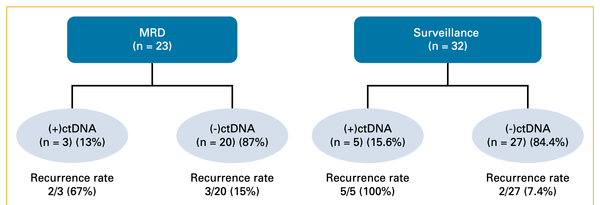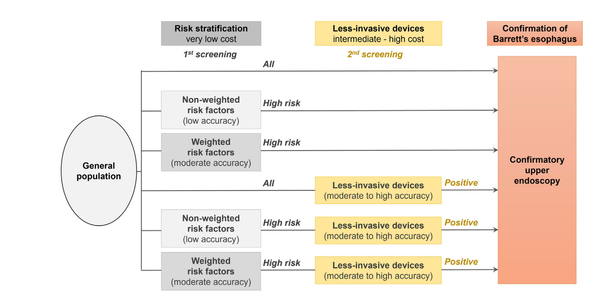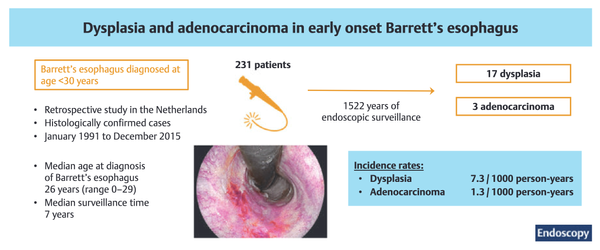Real-world experience with capsule sponge test

This large prospective observational study evaluated the potential usefulness of the Capsule Sponge (CS) test – a non-invasive method of collecting cellular samples from the esophageal lining – in a "real-world" setting at multiple NHS hospitals in the UK. Among the 2,170 patients who had a CS test, there were no adverse events; 22% were subsequently referred for endoscopy due to positive or inconclusive results, new or unresolved symptoms or patient anxiety, with the remainder discharged from the endoscopy waiting list. Of those with positive or inconclusive results who underwent subsequent endoscopy, 26.1% and 4.6% respectively were found to have Barrett's esophagus or focal metaplasia. In contrast none of the 79 patients with negative CS results who underwent endoscopy were found to have these conditions. These results were compared to a demographically similar "counterfactual" cohort who were not offered the CS test and underwent endoscopy as per usual pathways. The authors observed that a positive CS result substantially enriched Barrett's esophagus detection rates (by 4-5 fold) with high specificity. While these results are promising in terms of safely reducing the number of endoscopies needed among those referred for reflux symptoms, the non-randomized design, incomplete data collection and lack of long term follow-up should be kept in mind in its interpretation. In addition, the cohort under study (consisting of GP referrals for evaluation of reflux symptoms) was generally at very low risk of Barrett's or esophageal adenocarcinoma (58% females and median age 52); a higher risk cohort would presumably yield a higher rate of positive CS tests and Barrett's prevalence as well as lower specificity.
Use of a Non-Endoscopic Capsule-Sponge Triage Test for Reflux Symptoms: Results From the NHS England Prospective Real-World Evaluation.
Gourgiotis V, Graham C, Foerster K; NHS England Pilot and NHS England Oversight Group; Fitzgerald RC, Harvey R, Morris DL.
Abstract
Background: Acid reflux is a common presentation in primary care leading to a high volume of referrals to endoscopy that are often normal.
Aims: To determine whether a non-endoscopic capsule sponge biomarker test could triage patients with low-risk reflux symptoms, reduce endoscopy waiting lists and identify Barrett's oesophagus in a real-world setting.
Methods: Patients with reflux symptoms on NHS endoscopy waiting lists who were offered a capsule sponge (test group) between February 2021 and August 2022 were included in this national multicentre prospective cohort study and compared with eligible patients on the standard endoscopy pathway (counterfactual group).
Results: Two thousand one hundred seventy patients from 23 hospitals undertook a capsule sponge triage test and submitted follow-up data, of whom 1694 (78%) were discharged without endoscopy and 476 (22%) were referred for endoscopy. In a detailed subgroup analysis 1411/1549 (92%) attended and successfully swallowed the capsule of whom 307/1411 (21.8%) required endoscopy. Of 111 patients with positive capsule sponge biomarker results who had endoscopy, 19.8% had Barrett's oesophagus. In comparison, in patients with negative sponge biomarkers who were referred for endoscopy due to ongoing symptoms, none had Barrett's oesophagus (p = 0.0002). Eighty-two percent surveyed (267/357) were satisfied with the alternative pathway.
Conclusions: Capsule sponge triage is feasible, safe and acceptable. It substantially reduces the endoscopy burden for routine reflux referrals with a favourable diagnostic yield for Barrett's oesophagus. Longer term follow-up will help to confidently assess the impact of the programme and place of capsule sponge in the diagnostic pathway.
© 2025 The Author(s). Alimentary Pharmacology & Therapeutics published by John Wiley & Sons Ltd.




